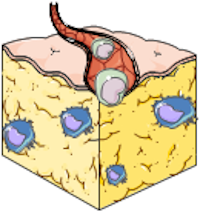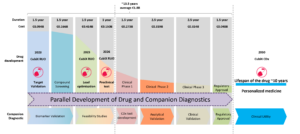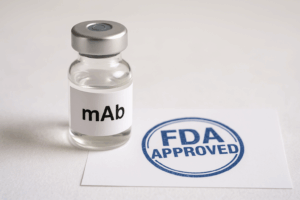Introduction
Organoids and organs-on-a-chip (vascularized 3d culture) have seen rapid growth in recent years due to their importance in mimicking the shape and operation of human organs. At the moment, efforts to vascularized organoids and organ-on-a-chip have piqued the interest of researchers. Thick organ tissue necessitates a dense network of micro-vascular vessels to provide oxygen and nutrients while still removing metabolic waste. Vascularization, in particular for organoids-on-a-chip, allows one to study biochemical reactions and drug transfer in vascular tissue. In recent years, the literature has centered on angiogenesis regeneration in vitro.
Simultaneously, the micro-flow control device effectively simulates the exact management of the tissue micro-environment in many ways, as well as providing biochemical and mechanical shear force as a tool for in vitro vascular network development. As a result, the authors plan to build a macro-micro bridge by updating existing literature on micro-flow control technologies, proposing ideas for precise management of the dynamic tissue structure model of in vitro organ reshaping, and investigating the interaction of vascularization in different tissues. These ideas are crucial for the next wave of vascular tissue engineering and the advancement of personalized medicine.
Micro-environment conditions determine the growth and development of cells in organ-on-a-chip, among which micro-flow models, embedded hydrogels, and fluid shear forces are important conditions that affect the vascularization of organ chips.
Organoids and organoids-on-a-chip are important means for 3D culture in vitro. They overcome many shortcomings of traditional 2D culture and are better at restoring the specific function of organs.

How to culture vascularized & immunocompetent 3D models in a standard Multiwell
Summary of Review on the Vascularization of Organoids and Organoids-on-a-Chip
The authors discuss that ”The use of human cells for the construction of 3D organ models in vitro based on cell self-assembly and engineering design has recently increased in popularity in the field of biological science. Although the organoids are able to simulate the structures and functions of organs in vitro, the 3D models have difficulty in forming a complex vascular network that can recreate the interaction between tissue and vascular systems. Therefore, organoids are unable to survive, due to the lack of oxygen and nutrients, as well as the accumulation of metabolic waste.
Organoids-on-a-chip provides a more controllable and favorable design platform for co-culture of different cells and tissue types in organoid systems, overcoming some of the limitations present in the organoid vascularized 3d culture. However, the majority of them have vascular networks that are not adequately elaborate to simulate signal communications between bionic microenvironment (e.g., fluid shear force) and multiple organs.
Here, we will review the technological progress of vascularization in organoids and organoids-on-a-chip and the development of intravital 3D and 4D bioprinting as a new way for vascularization, which can aid in further study on tissue or organ development, disease research and regenerative medicine.”
Keywords: organoid, organoids-on-a-chip, vascularization, advanced printing methods, micro-environment
References
Zhao X, Xu Z, Xiao L, et al. Review on the Vascularization of Organoids and Organoids-on-a-Chip. Front Bioeng Biotechnol. 2021;9:637048. Published 2021 Apr 12. doi:10.3389/fbioe.2021.637048
FAQ
Organoids and organoids-on-a-chip are used for three-dimensional cell systems grown outside a living organism. These models have seen rapid growth because they are important for copying the shape and operation of organs in humans. They are considered an important method for laboratory-based cell growth. These systems address many of the shortcomings found in traditional two-dimensional cell cultures. They are better at restoring the specific function of an organ. The construction of 3D organ models in a laboratory setting, based on cell self-assembly and engineering design, has recently increased in popularity. Organoids, specifically, are able to recreate the structures and functions of organs.
Vascularization is required for thick organ tissue models. These tissues require a dense network of micro-vascular vessels. This network is needed to provide oxygen and nutrients. It also serves to remove metabolic waste. Organoids have difficulty forming a complex vascular network that can recreate the connection between tissue and vascular systems. Because of this, the organoids are unable to survive. This is due to the lack of oxygen and nutrients. It is also caused by the accumulation of metabolic waste. For organoids-on-a-chip specifically, vascularization serves another purpose. It permits the study of biochemical reactions. The transfer of drugs in vascular tissue can also be examined.
The micro-flow control device is important for these systems. It effectively recreates the exact management of the local tissue surroundings in many ways. This device also provides biochemical and mechanical shear force. It acts as a tool for the creation of vascular networks outside a living organism. The local conditions of the cellular surroundings are what determine the growth and path of cells in an organ-on-a-chip. Micro-flow models are an important part of these conditions. Other important conditions include the embedded hydrogels and the fluid shear forces. These factors all affect the vascularization of the organ chips.
Organoids-on-a-chip provide a design setup that is more controllable. This setup is better for the co-culture of different cells and tissue types within organoid systems. It addresses some of the shortcomings that are present in organoid vascularized three-dimensional culture. A problem still exists, however. The majority of these systems have vascular networks that are not sufficiently elaborate. These networks are unable to recreate the signal communications that occur between the artificial local surroundings and multiple organs. An example of this communication is the effect of fluid shear force.




